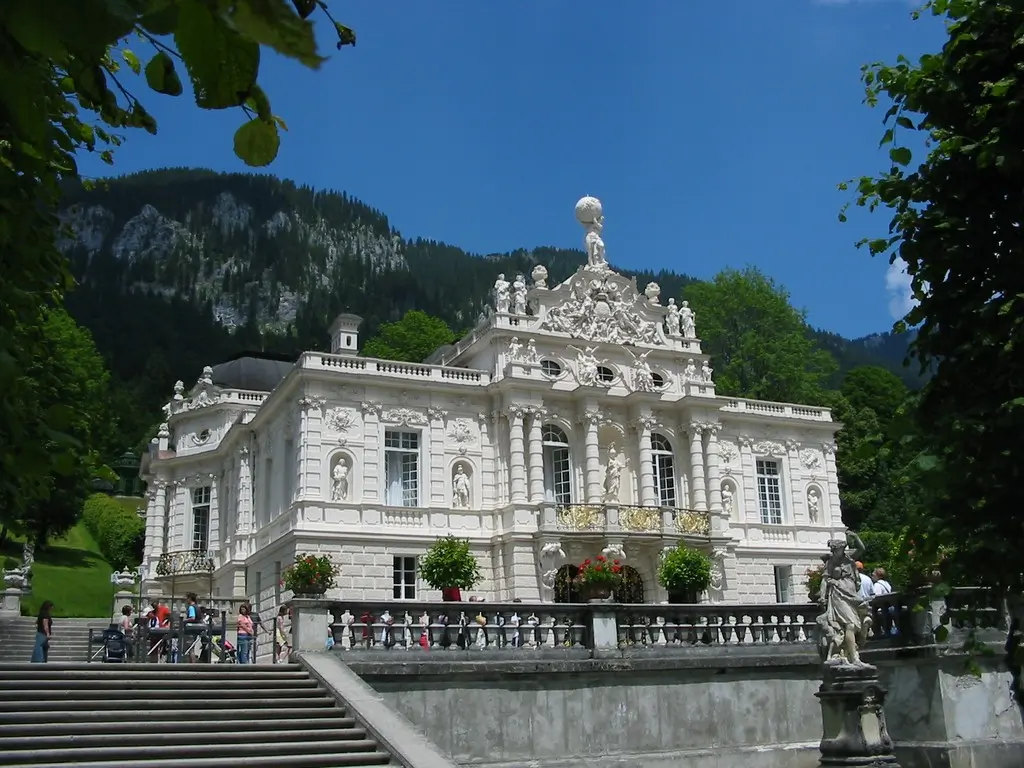Last Updated on 31/01/2023
Ludwig 2 of Bavaria managed to build several palaces. But only one he brought to perfection – external and internal.
Linderhof is a must-see attraction. It is located in a secluded valley near Oberammergau (about Oberammergau and Ettal at the end of the topic).
The nearest tourist points from where it is easy to get to the palace are
Munich,
Füssen,
Garmisch,
Reutte
and the Zugspitze Arena.
How to get
From Munich. By train to Oberammergau, then bus 9622.
From Füssen or Schwangau. Bus 9606 leaves from the station in Füssen and passes through Schwangau. So you can enter on the road. Valid Bavarian ticket (ticket must be bought at the station). But cheaper is the daily bus ticket (Tagesticket).
To get to Linderhof, you need to get to Oberammergau by bus with one change at Echelsbacher Brücke with a 5-minute wait. At the stop, by the way, there is a wonderful bridge across a deep gorge. Then wait a bit in Oberammergau for bus 9622, which runs through Ettal to Linderhof. The whole journey is about 2 hours.
By car, you can take the same route as the bus, that is, through Oberammergau. And you can through the Reutte and Lake Plansee, but not in winter (the road is often closed)
From Garmisch-Partenkirchen. Take bus 9606 to Ettal, where you can change to bus 9622.
It is also possible to make a circular route from Garmisch by car. In one direction, go through Ettal, in the other – through Lake Plansee.
The first plan of Linderhof was made by Ludwig in 1868. The new building was erected on the basis of a forest house that belonged to his father, Maximilian 2. By 1876, the design of the interiors of the palace was complete. In 1874 the plans for the park were completed.
Palace
On the ticket to the palace, as in Neuschwanstein, they write the time of the tour. Attention: the ticket office is at the entrance to the park, and the park is big! Tours are conducted in English and German, you can take a folder with the text of the tour in other languages.
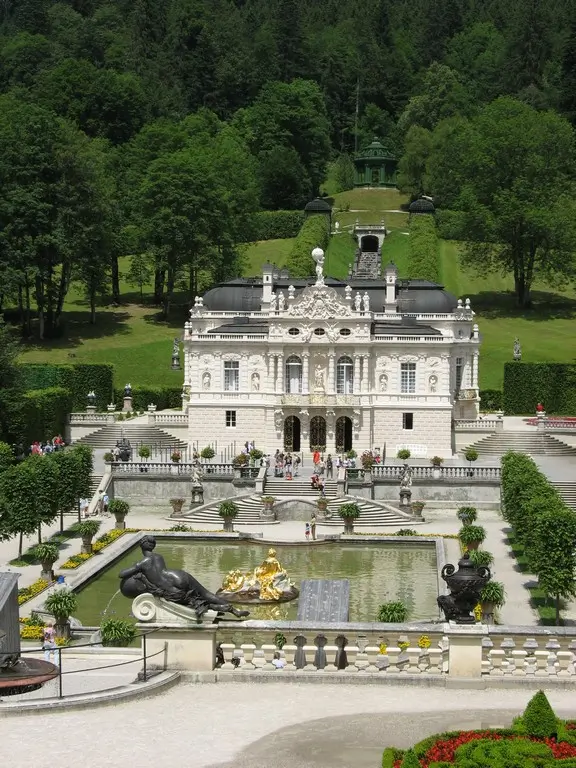
The eastern and western parterres are located to the right and left of the castle.
The east parterre is a three tier garden in the style of French regular gardens with ornate flower beds and figures allegorically representing the 4 elements: fire, water, earth and air. In the center – a stone sculpture of Venus and Adonis, a fountain with a gilded figure of Cupid with an arrow and a stone bust of King Louis 16th of France.
The west parterre was the first palace garden. In the center – flower beds with two fountains with gilded figures of the goddess of glory Fama and Cupid. Along the perimeter are the symbolic figures of the four seasons.

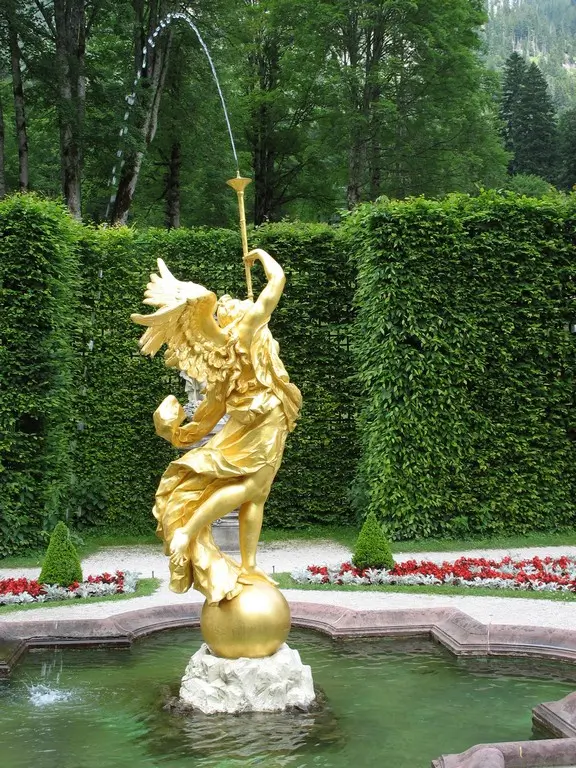
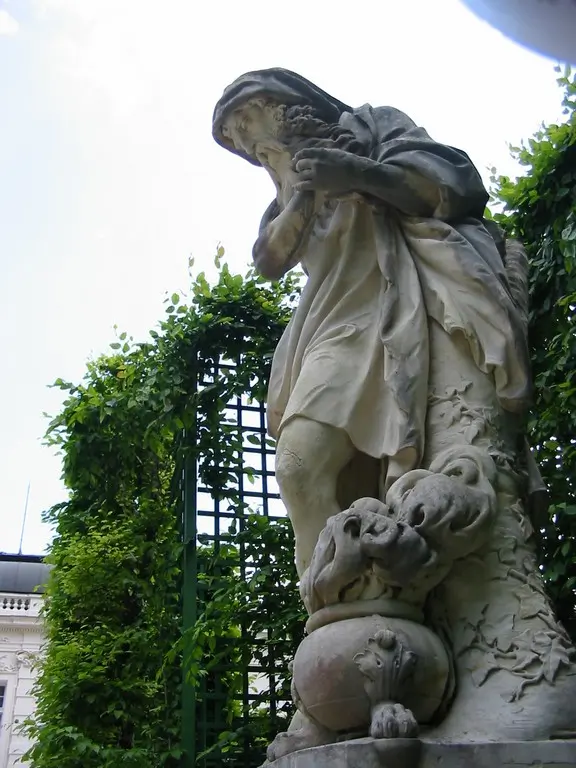
The palace is small. Everything is designed so that one person lives alone in it, not even meeting with servants. Even the king’s food was served in the lower rooms, and it was sent upstairs with the help of a rising table.
The abundance of gilding, painting, mirrors surpasses all luxurious interiors that I’ve ever seen.
The Hall of Mirrors is especially insane in this sense. High mirrors arranged in a circle endlessly increase the space, multiply the light of the lamps and reflect every facet of different curiosities. For example chandeliers made of ivory.
Therefore, it is sometimes difficult to see the details and understand where the original ends and the reflection begins. The abundance of details is dizzying. And I have not yet come across a photograph in which it was possible to examine in detail – only mirrors and gilding are visible.
Park
The park covers 80 hectares. There are Renaissance-style terraces, severe Baroque parterres, and an English landscaped park that gradually turns into forest and mountains.
Main pavilions in the park are located along the perimeter of the circular road, in the center of this circle is the palace.
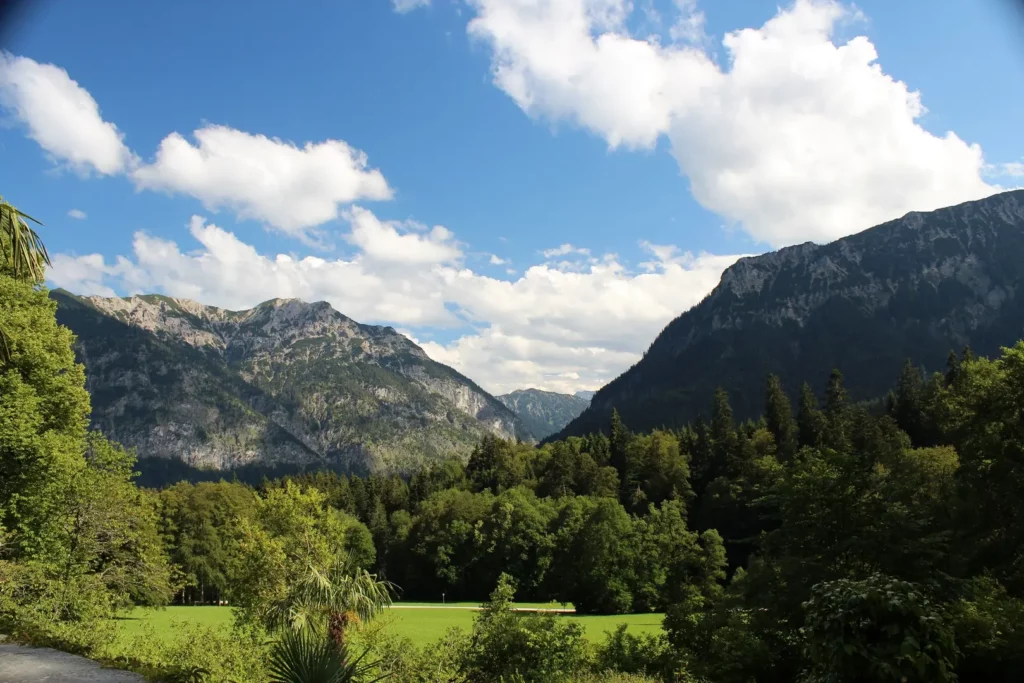
Linden pergolas rise along the cascade, which ends at the palace with a fountain with the figure of Neptune. Stone figures symbolize the four continents.
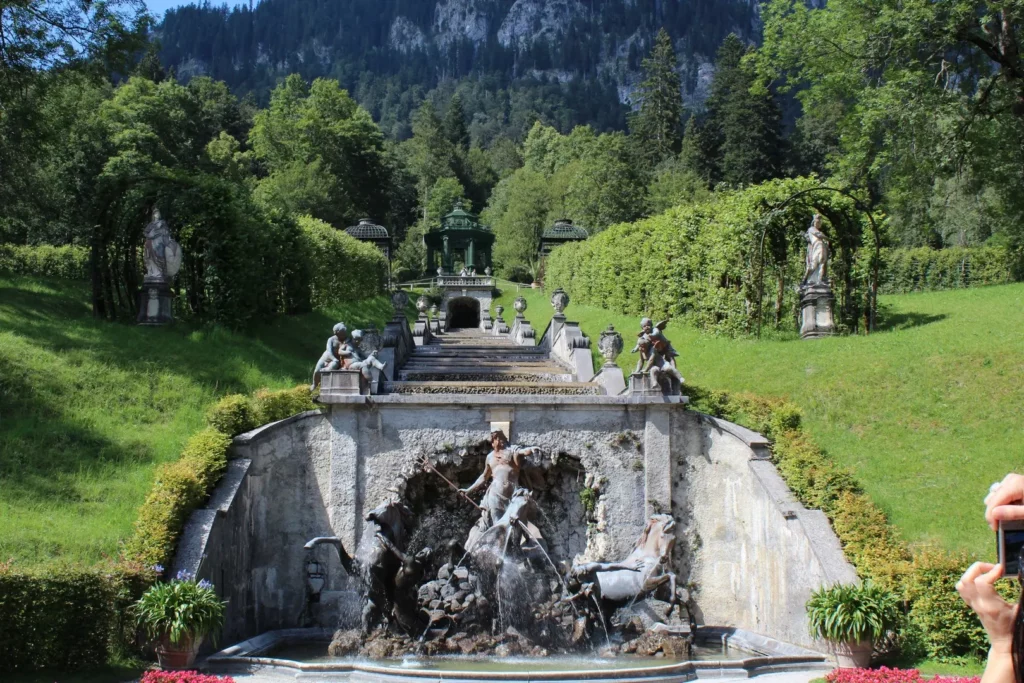

The most beautiful are the Moroccan and Moorish pavilions with glorious stained-glass windows.
Moroccan pavilion was bought at the Paris World Exhibition in 1878, and the interior was changed at Ludwig’s request. The house originally stood outside of Linderhof near the German-Austrian border, not far from the hunting lodge. After Ludwig’s death, it was bought by a private person and not returned to the park until 1982.
Moorish Pavilion houses the famous Meissen porcelain peacock throne.
You cannot enter inside. The interior is viewed through glass. The entrance is specially darkened in order to see the play of light penetrating through the stained-glass windows.
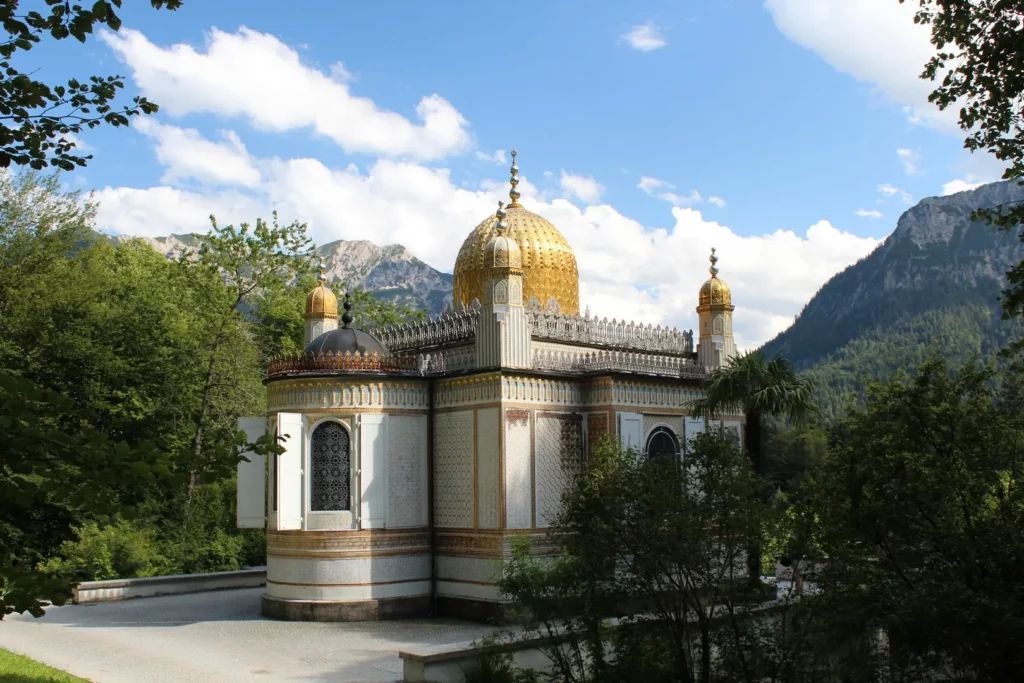
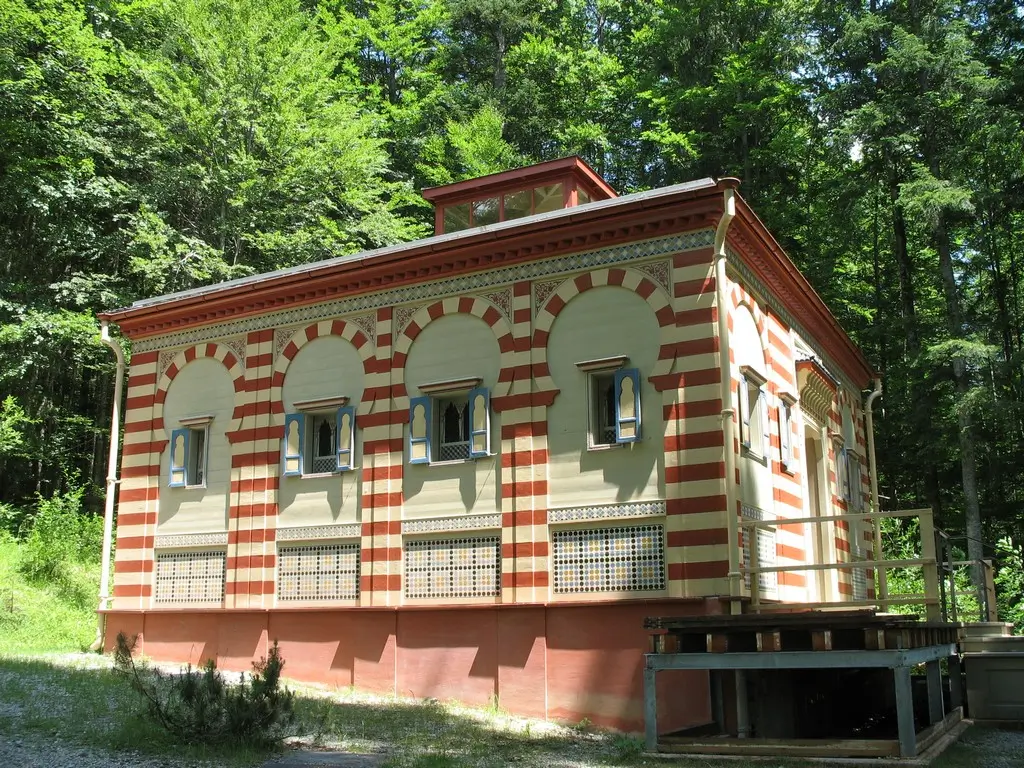
You can see the main pavilions in 40 minutes. Or you can stay longer. The main thing is not to wander somewhere in the mountains by accident.
The large fountain in front of the palace is turned on for 5 minutes at the beginning of every half hour.
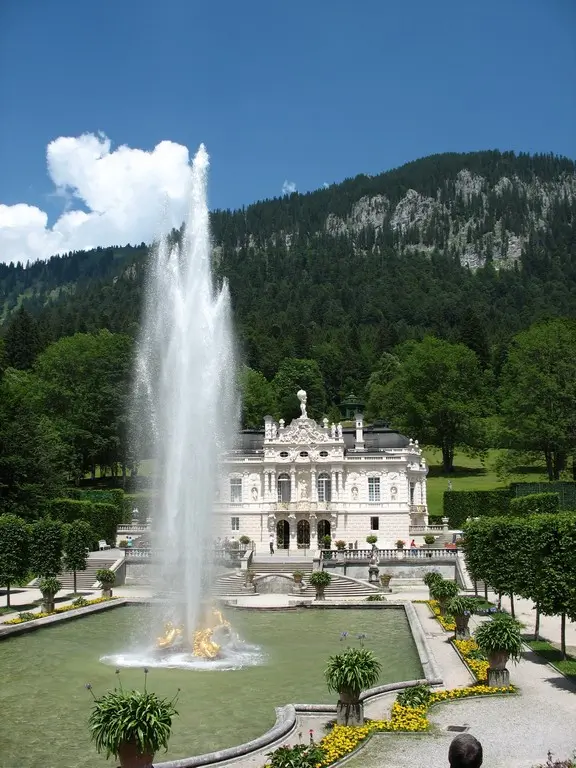
A huge linden tree (about 300 years old) stands next to the fountain. She originally gave the name to the farm and then to the castle.
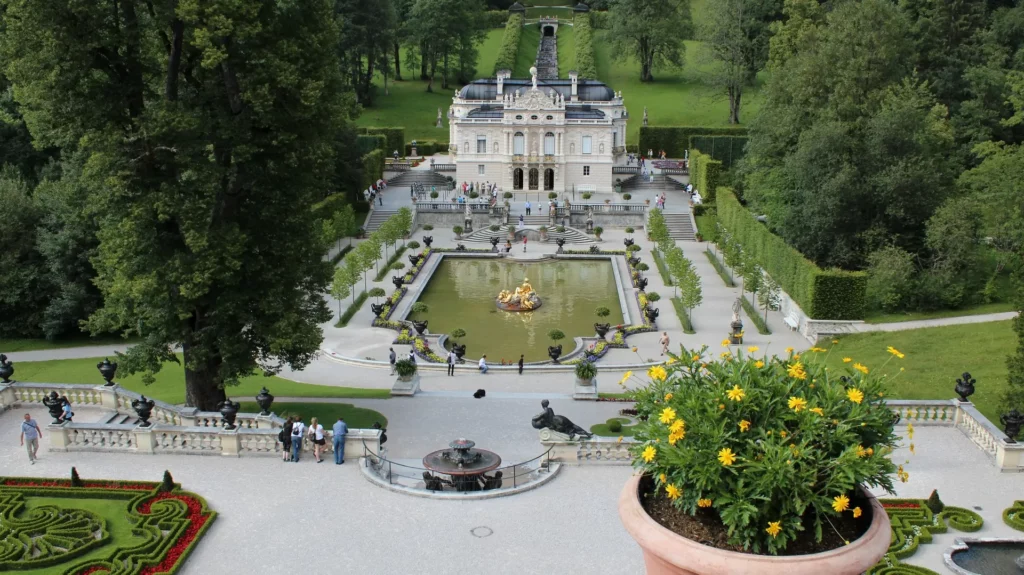

With a ticket to the castle, you can get into an artificial grotto. Tours are held approximately once every half an hour, the time of the nearest tour is shown on the light board at the entrance.
The Grotto of Venus was built in 1877. The cave with a lake and a waterfall was created to depict the first act of Wagner’s opera Tannhäuser. Electricity was provided for the lighting. Stone doors were opened with a special hidden switch.
The tour in the grotto is also conducted in English and German, however, while you wait for the translation, you can freeze. All this action is rather depressing: Wagner’s music sounds, everything is appropriately highlighted.
In winter, the park pavilions are closed, as are most of the park paths – they are completely covered with snow. Workers clear only the path to the palace. A cross-country ski track is laid in the valley.
Ettal
Ettal is a large monastery and a small village from where the road to Linderhof starts.
The monastery was founded by Kaiser Ludwig of Bavaria in 1330, when he was returning from Italy, to fulfill his vow. The name is made up of the German words “valley” and “promise” (Tal der Ehe).
According to legend, the Kaiser’s horse knelt three times on the spot where the monastery church stands. Legend is legend, but for some reason the horse preferred a strategic place on the trade route to Verona. The Kaiser donated a statue of St. Mary, which he brought from Pisa. Later, the statue became an object of pilgrimage.
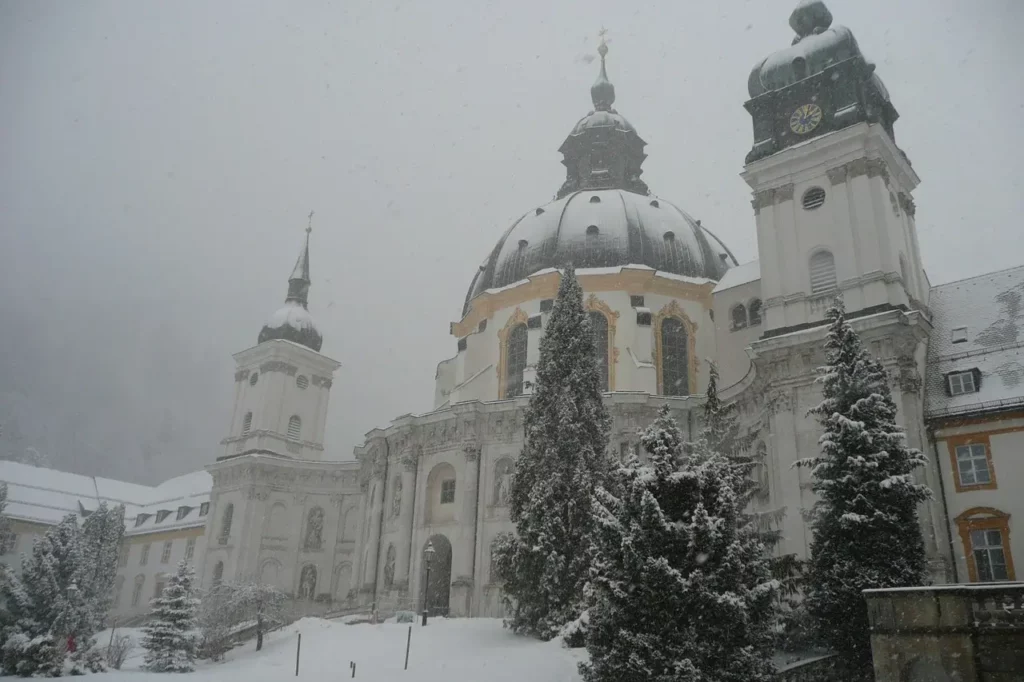
Follow me
The golden age of Ettal began with the beginning of the 18th century. The Academy of Knights was founded, a very successful educational institution. After a strong fire in 1744, the Gothic buildings of the monastery were rebuilt in the Baroque style. And it has become the most popular pilgrimage site in the region.
The monastery was secularized in 1803. At the end of the 19th century it was returned to the possession of the monks – a Benedictine monastery was re-founded.
In 1878, the world’s first thermal power plant was built in Ettal. She supplied Linderhof Palace with electricity.
The monastery is still active. This is one of the largest Benedictine communities – about 50 monks. They produce monastery liquor, own a bookstore and publishing house, a hotel and a cheese factory.
You can visit the basilica (open from 8.00 to 18.00 / 19.45) and the cheese factory (Schaukaëserei)
Oberammergau
Oberammergau is a summer and winter resort. It is known not only for its proximity to Linderhof, but also for its preserved folk traditions: house paintings, wood carvings (the Bavarian school of carvers is located here) and the traditional folk performance Passionspiel.
You can see the work of carvers in Pilatushaus.
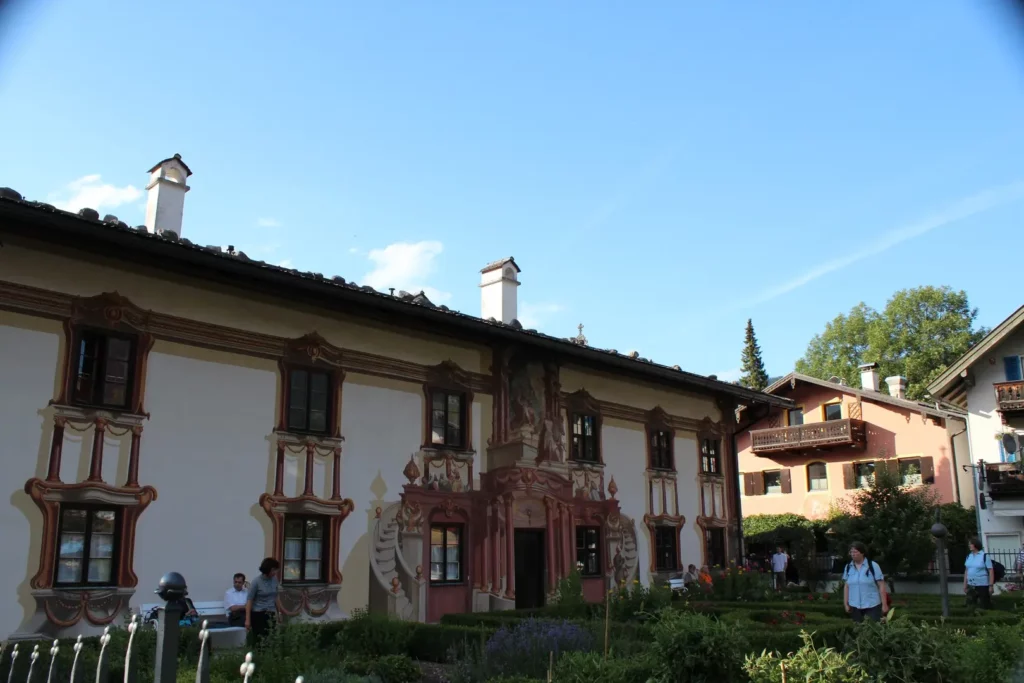
Passionspiel have been held every 10 years (years ending in 0) since 1634 to celebrate the deliverance from the plague. The villagers – about 2000 people – participate in the performance. The performance lasts about 6 hours, with a break for dinner. Actors depict scenes – “live” pictures – from the Old and New Testaments, which are accompanied by music and text reading.
Those who are not interested in such difficult entertainment can explore the surroundings.
For this, two cable cars are offered: Laber (to a height of 1684 m) and Kolben (to a height of 1250). The chairlift on Kolben is interesting primarily for the opportunity to ride on a new 2.6-kilometer coaster.
Of the additional entertainment, the WellenBerg thermal pool and the reptile house.
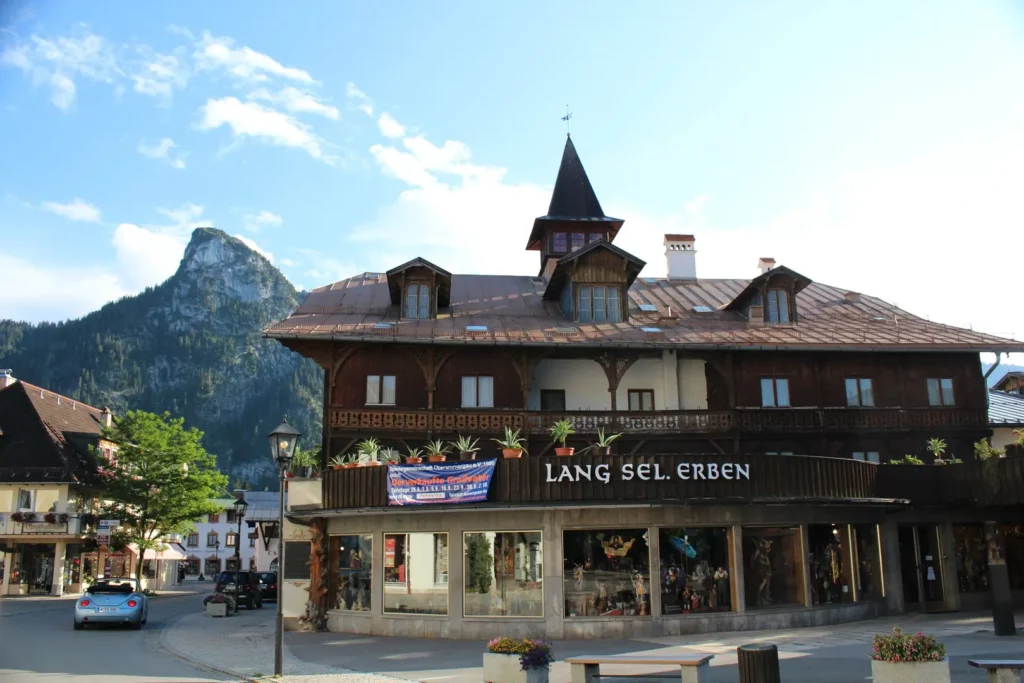
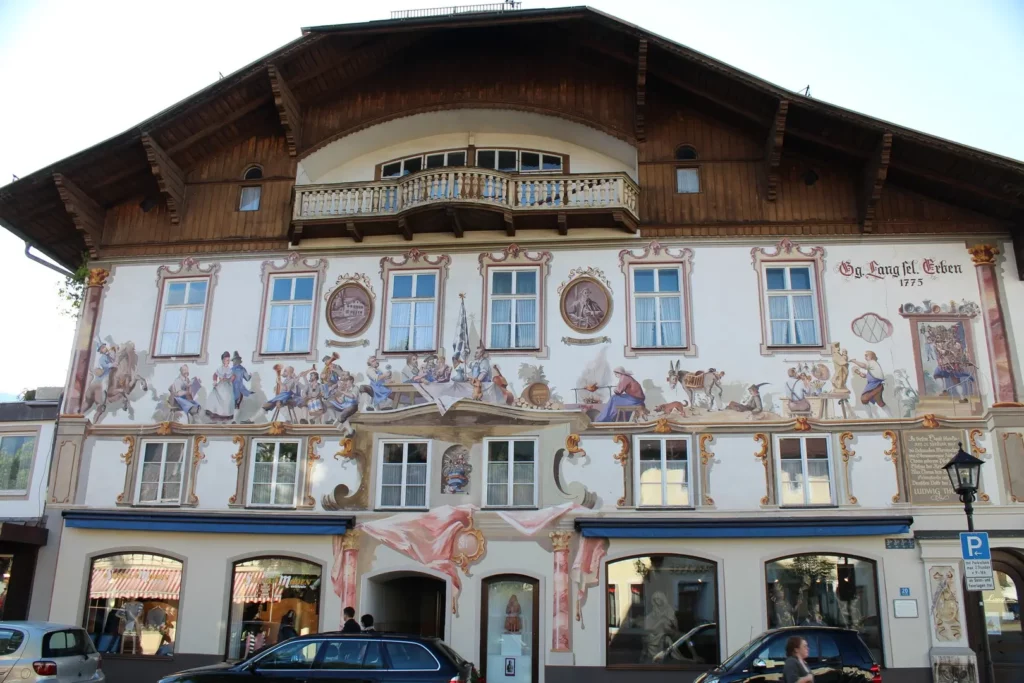
About other sights of the region:
Garmisch-Partenkirchen: Part 1, Part 2, Part 3
Füssen and Schwangau
Reutte
Zugspitze Arena
Sights of Allgäu on the map
Sights of Oberbayern on the map
Do you enjoy the site without cookies? This means that I work for you at my own expense.
Perhaps you would like to support my work here.
Or change your cookie settings here. I don’t use personalized ads

